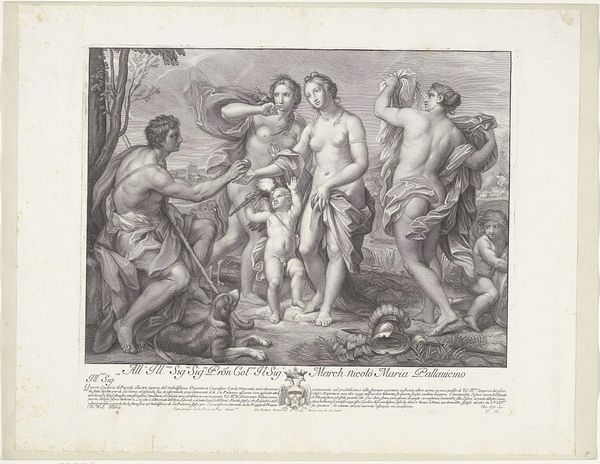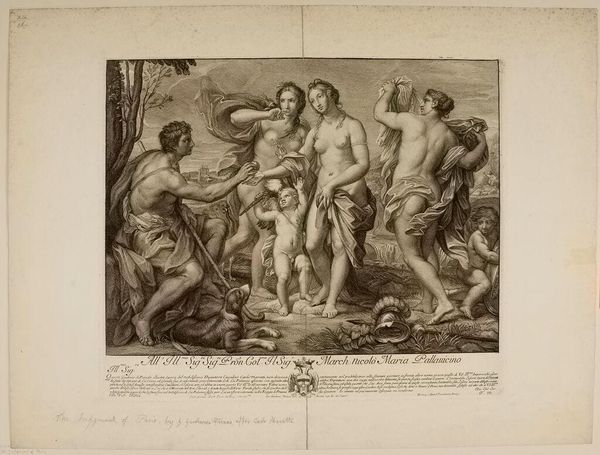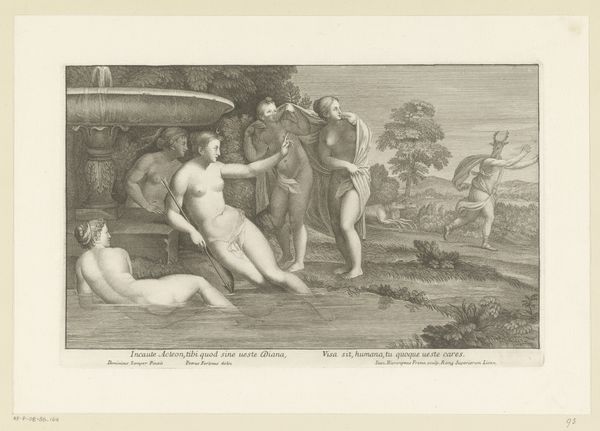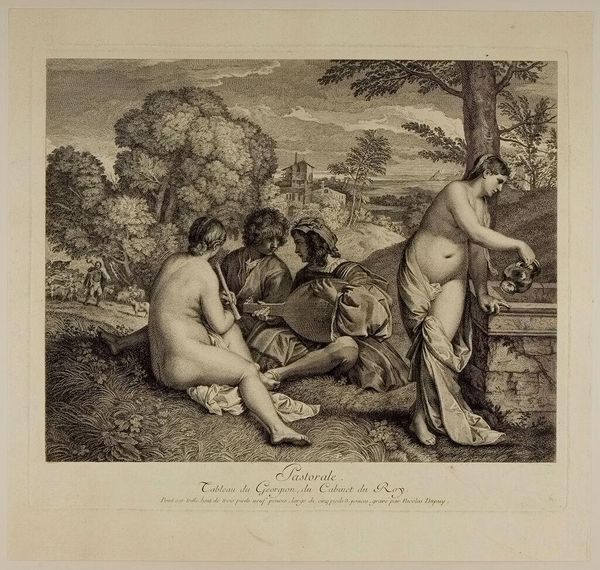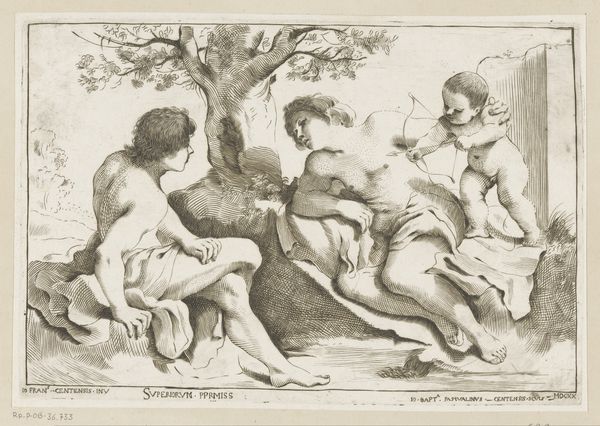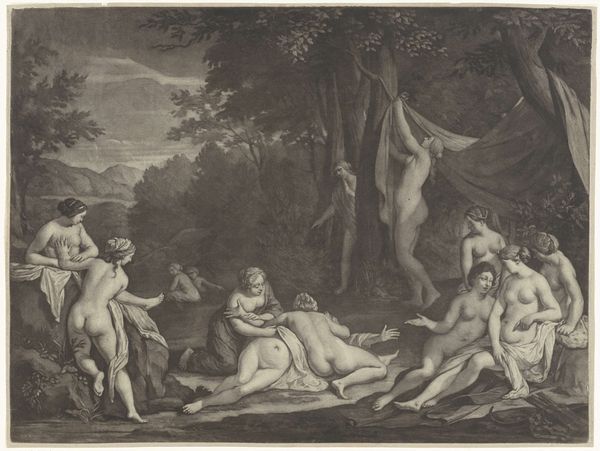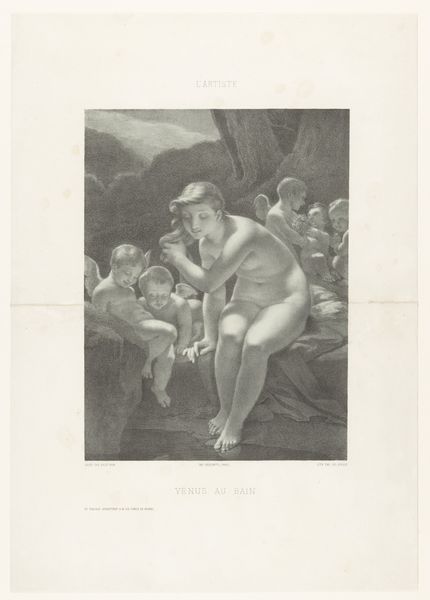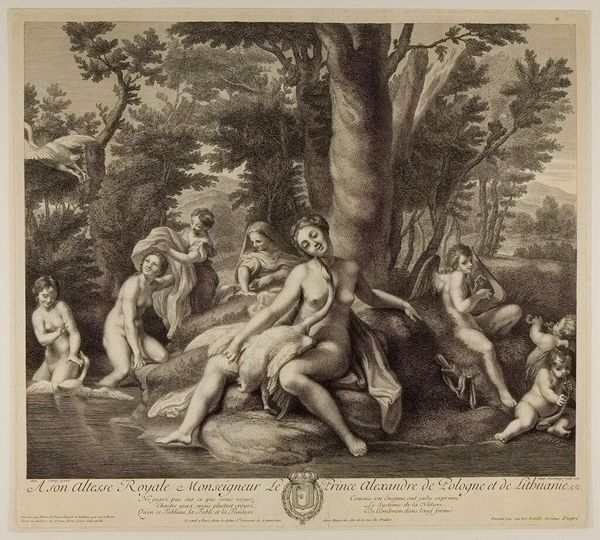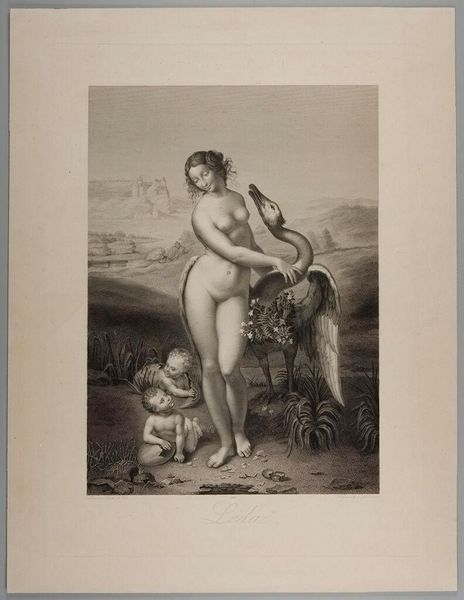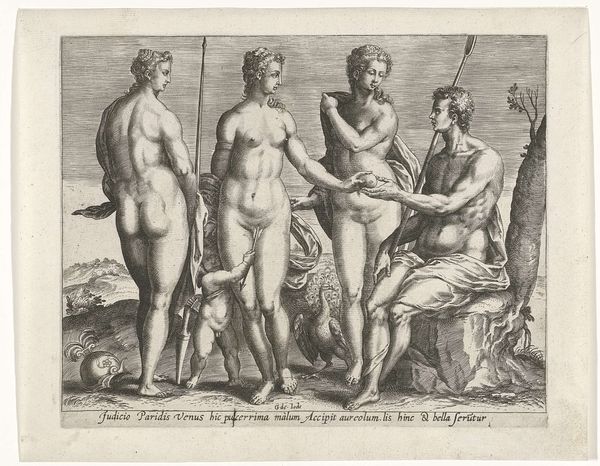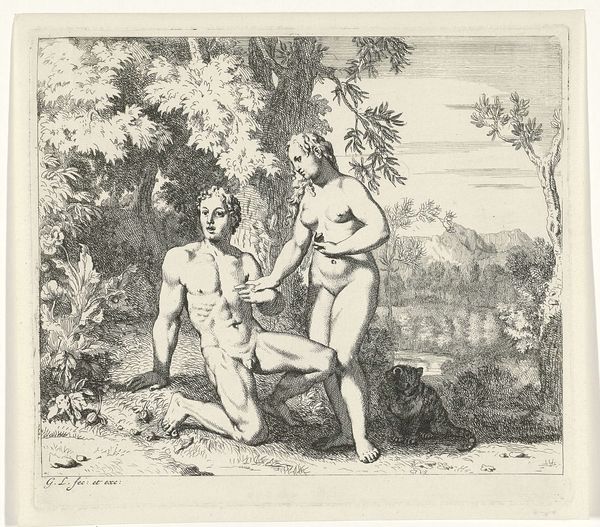
engraving
#
baroque
#
old engraving style
#
classical-realism
#
figuration
#
line
#
history-painting
#
nude
#
engraving
Dimensions: height 385 mm, width 400 mm
Copyright: Rijks Museum: Open Domain
Curator: Here we have Giovanni Girolamo Frezza's "The Judgement of Paris," an engraving from 1704. My first thought goes straight to the labor involved in crafting this piece. The sheer amount of meticulously etched lines needed to create these delicate figures… incredible! Editor: It is visually striking, if somewhat cool in tone. The way Frezza portrays the figures creates an atmosphere of classical remoteness. There's a calculated drama, wouldn’t you agree? Curator: Precisely. Think of the socio-political context. Prints like these were often made to circulate images of power, status. Engravings allowed artworks and their messages to reach wider audiences than painting alone ever could. What do you think it communicated about class and societal standing at the time? Editor: Absolutely, engravings had an essential public role. They served as a sort of visual journalism, documenting events, disseminating propaganda, and shaping public opinion about aesthetics, morals, and even political ideals. This scene shows a mythological narrative but I think it is fair to say it certainly promoted accepted conventions of beauty in its depiction of the goddesses. Curator: And note how Frezza worked with the material qualities of the engraving. See how he utilizes varied line weights to create a sense of depth and volume? Also, think of the materials used to create the plate, the inks to print, the paper itself…these elements are fundamental to understanding the finished product. It highlights skill as an artisanal endeavor. Editor: The formal skill on display undeniably serves larger purposes, too. Beyond artistry, we witness here the social and cultural influence of art as a potent ideological force. These images subtly shaped people's worldview at the time. Curator: A key demonstration in material culture’s development throughout early modern Europe. Editor: Absolutely. And on that note, it leaves one contemplating the image’s endurance. Its resonance today reminds us of history's continued ability to mold our current perspective and cultural values.
Comments
No comments
Be the first to comment and join the conversation on the ultimate creative platform.
